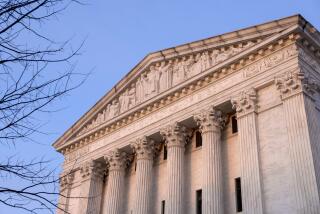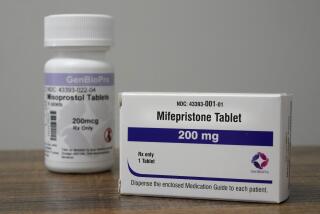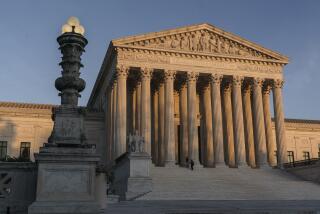Patent case goes to high court
- Share via
The U.S. Supreme Court agreed Monday to review for the first time in 28 years what business methods can be patented, an issue that has divided the titans of biotechnology, financial services and information management systems.
The justices agreed to review an October ruling by the U.S. Court of Appeals for the Federal Circuit that limited patent protection to inventions involving machines or physical transformation.
The petitioners, Pittsburgh inventors Bernard L. Bilski and Rand A. Warsaw, sought review by the high court after being denied a patent on their computerized method for using weather data to predict commodities prices and energy costs.
“By accepting the case, we hope the court is signaling its desire to reaffirm that patent protection is available to a broad range of inventive processes that drive today’s information economy,” said J. Michael Jakes, the lawyer who petitioned the high court for review of the grounds for rejecting Bilski’s patent.
He acknowledged, though, that there is a risk the justices could set a more restrictive standard for what is patentable than his clients would like.
“You get what you ask for when you ask the Supreme Court to take the case. But I think the fact that the court was willing to step in and take the case is a good sign for us. The government urged them not to, so it shows they’re interested and maybe feel like the federal circuit’s definition isn’t the right one,” said Jakes, a partner with Finnegan, Henderson, Farabow, Garrett & Dunner.
Although some software and business consulting giants backed Bilski’s quest for a broad, inclusive definition of what is patentable, others, including Microsoft Corp. and IBM Corp., argued in support of the U.S. Patent and Trademark Office’s move to impose a physicality test after years of rather liberal interpretations by patent examiners over what qualified as an invention.
Before the federal appeals court’s Oct. 30 ruling on the Bilski claim, patent examiners used the test of whether an invention was “new, useful and not obvious.”
Bilski’s petition for the Supreme Court to update its 1981 definition of patentability argued that the requirement that a business method have a physical quality would discourage innovation in the high-technology fields that drive the U.S. economy.
The justices are expected to review the case during their next session, beginning in October.
--
More to Read
Inside the business of entertainment
The Wide Shot brings you news, analysis and insights on everything from streaming wars to production — and what it all means for the future.
You may occasionally receive promotional content from the Los Angeles Times.











